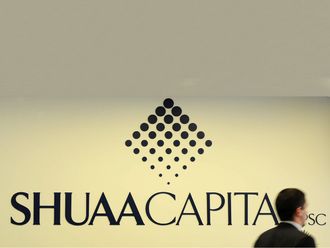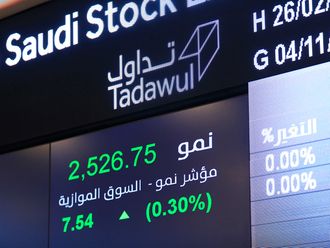If calculated over an extended period of time, statistics for economic growth tend not to lie.
The trend rate at which real activity expands will probably have passed through the rise and fall of a business cycle, more or less. It will depend on aggregate productivity in the supply of goods, services and income, more than the rate at which money has been printed to account for it in terms of measured demand.
Why make the distinction? Well, because at present key central banks around the world are stepping up their efforts to spark real activity purely by monetary means, steeped in arcane economic theory. The US Federal Reserve, the Bank of Japan and the Bank of England are respectively committed to, under pressure to, and flirting with throwing the proverbial kitchen sink at their supposedly stagnant economies.
They have taken up the cudgels in the absence of scope for additional fiscal stimulus, as governments struggle with mountainous budget deficits and debts. And they do so without reference to the kinds of structural reform for which policy makers seem to have very little time, given that its stimulatory effects might have to wait until beyond the next election, whenever that might be.
The point of the data displayed here is to show how the experience of economic growth among the regional blocs compare with the figures achieved by Mena and the constituent members of the GCC. In particular, they indicate the shift in power from the advanced countries, for example the US, Europe and G7, to the emerging countries of the developing world, especially in Asia, and most obviously China (see table and chart).
The overall impression can only be that the Gulf region, while it may be interested in the West for certain types of investment, will logically look to the East for its growing relationships and international trade.
Economic growth over time can, of course, be the result of simply developing and depleting the innate resources available to a country, for instance agricultural land or the mining of minerals, or some level of efficiency in manufacturing of raw materials, or sheer commercialism and intermediation, or indeed by the skilful application of technical, saleable know-how. Or, of course, some combination.
The Gulf has been able to prosper by extracting from the earth the elements craved by the world’s ever-expanding population: consumers, businesses and governments. Increasingly it has tried to turn to complementary industrial sectors, as well as commitments to scientific ingenuity in pursuit of the value-added that should maintain progress in decades to come.
Dubai, indeed, is an exceptional example of where these two strands of economic generation meet, combining regional resource wealth with a dedication to maximising commercialism per se, through trade and financial services, tourism, construction, etc. The caveat that applies is to be careful of the beguiling force of pure momentum, and keep watch over the boundaries of excess.
For the rest of the world, the steady demise of the traditional havens of prosperity is a wonder to behold. Both the US and Europe now are completely absorbed in their fatigue and decadence by painful exercises of wealth redistribution conducted by overstretched governments, with central banks desperately trying to buy economic growth with money made from thin air.
It’s a sorry sight, although the financial markets have applauded every surge of liquidity swelling their portfolios. Fortunately for the US at least, it now has the prospect of gas to spare.
The year-end being generally a time for review and outlook, we might consider here what the track record of the Gulf has been by comparison in terms of policy action towards defying the downturn.
Rachel Ziemba, director at Roubini Global Economics, provided me with a useful summary this week.
Following the interest rate cuts of 2008/09 to very low levels, “GCC authorities have relied almost entirely on fiscal policy, rapidly scaling up spending,” she said, responding to the Arab Spring as well as the international crisis.
That contrasts with developed markets who have minimal space for fiscal stimulus and are relying entirely on the monetary variety, although their “monetary mechanism is broken”.
Meanwhile, “GCC governments and central banks are choosing to support banks directly by boosting deposits, bringing loan/deposit ratios to more reasonable levels to support credit extension. This [intervention], even more than direct investments, is supporting the restart of property development, and supporting growth.”
“There are still things local governments could do,” Ziemba adds, namely (i) provide more clarity on the implementation of regulations, (ii) increase tools to provide liquidity, eg. discount windows, (c) improve the business environment and make it easier to invest across GCC countries, (d) invest more in infrastructure, not just transfers to the population.
That’s the difference between subsidising a short-term artificial boost and helping enhance the kind of long-term productivity that will show up in the eventual numbers.











